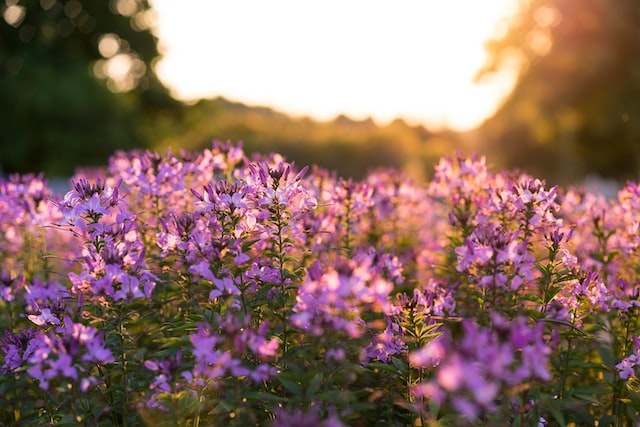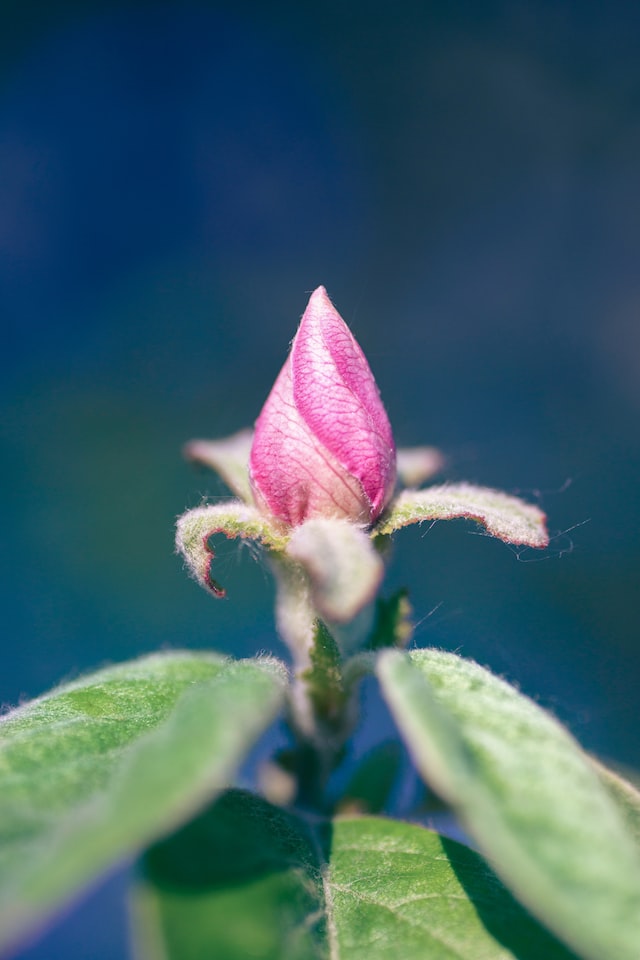Experience Elegance with Bellflower Fragrance at Scentopia Singapore
The Enchanting World of Bellflowers: A Symphony of Fragrance, Beauty, and Uses
The bellflower, a charming and diverse genus of flowering plants, has captured the hearts of botanists, gardeners, and nature enthusiasts for centuries. With their delicate and bell-shaped blooms, bellflowers have earned their place in gardens, perfumes, and therapeutic oils around the world. However, their allure goes beyond aesthetics, as some bellflower species possess unique fragrances that have found their way into perfumes and aromatherapy oils. In this comprehensive article, we will delve into the enchanting world of bellflowers, exploring their fragrances, therapeutic uses, culinary potential, medicinal properties, historical significance, and fun facts that make them an extraordinary and delightful addition to the natural world.
I. Introduction to Bellflowers:
Bellflowers, also known as Campanula, belong to the Campanulaceae family and encompass a wide array of species, with over 300 varieties identified. These plants can be found in various regions, from temperate climates to alpine meadows, and are characterized by their bell-shaped flowers and diverse growth habits.
II. Fragrance in Perfumes:
While not all bellflowers possess a strong fragrance, some species like Campanula medium have allured perfumers with their delicate and pleasant scents. The fragrance of bellflowers is often described as sweet, floral, and slightly herbal, akin to a symphony of blooming petals.
In the realm of perfumery, bellflower essence is used as a heart note, providing a soft and captivating touch to fragrances. Its floral aroma blends well with other notes, enhancing the overall olfactory experience.
III. Therapeutic Oils:
Bellflower essential oil is known for its therapeutic properties, particularly in traditional herbal medicine. Extracted from certain bellflower species, the oil contains active compounds like terpenes and phenols that contribute to its potential health benefits.
In aromatherapy, bellflower essential oil is utilized to promote relaxation, alleviate stress, and uplift the spirit. The gentle and floral aroma of the oil is believed to soothe the mind and evoke feelings of tranquility and joy.
IV. Culinary Potential:
While not commonly used in mainstream culinary practices, some bellflower species have intriguing culinary potential. The flowers of certain bellflowers are edible and can be added to salads, desserts, and beverages as a delightful and colorful garnish. Bellflowers have a slightly sweet and grassy flavor, adding a unique twist to culinary creations.
However, it is essential to note that not all bellflowers are edible, and some can be toxic if ingested. Therefore, it is crucial to ensure the specific bellflower variety is safe for consumption before adding it to your dishes.
V. Medicinal Properties:
In traditional herbal medicine, some bellflower species have been used for their medicinal properties. The roots and leaves of certain bellflowers have been employed to treat various ailments, such as respiratory issues, digestive problems, and skin irritations.
However, it is essential to exercise caution when using bellflowers for medicinal purposes, as some species can be toxic and cause adverse reactions.
VI. Historical Significance:
Bellflowers have a rich historical significance, with various cultures embracing them as symbols of different virtues. In Greek mythology, the bellflower was associated with the goddess Flora, representing gratitude and affection. In Victorian times, bellflowers were a popular choice in cottage gardens, signifying a message of everlasting love and humility.
VII. Fun Facts:
- The bluebell (Campanula rotundifolia) is one of the most well-known and beloved bellflower species, often found in meadows and woodlands, enchanting passersby with its vibrant blue blooms.
- In Turkish folklore, it is believed that fairies reside among the bellflowers, adding to their mystical allure.
- The bellflower's name is derived from the Latin word "campana," meaning bell, owing to the shape of its blooms.
- In Japan, bellflowers are considered a symbol of gratitude and good luck, often gifted as tokens of appreciation.
The bellflower's captivating beauty, delicate fragrances, and potential therapeutic uses make it a remarkable and multifaceted botanical treasure. From its role in perfumery to its culinary potential and historical significance, the bellflower continues to enchant and inspire nature enthusiasts worldwide. As we explore the bellflower's diverse and fascinating attributes, we are reminded of the rich tapestry of the natural world and the endless wonders it holds. Whether adorning gardens or adorning our senses with its fragrant notes, the bellflower remains an extraordinary and cherished gift from the world of flowers.
To experience augmented reality, please open the Facebook-app using QR code and point to the image below
Embrace the Essence of Bellflower Fragrance
Bellflowers are a type of flowering plant that belong to the Campanulaceae family. They are native to temperate regions of the world and are known for their bell-shaped flowers, which are typically blue, purple, or white in color. There are over 500 species of bellflowers, and they come in a wide range of sizes, shapes, and colors.
Bellflowers are popular garden plants due to their attractive flowers and ability to tolerate a variety of growing conditions. They are often used in rock gardens, border plantings, and as cut flowers.
Bellflowers are popular garden plants due to their attractive flowers and ability to tolerate a variety of growing conditions. They are often used in rock gardens, border plantings, and as cut flowers.
Indulge in the World of Floral Fragrances
Bellflowers have a number of potential health benefits, including:
- May have anti-inflammatory properties: Some studies suggest that bellflowers may have anti-inflammatory properties, which may make them useful in the treatment of conditions such as arthritis and asthma.
- May have antioxidant effects: Bellflowers are a rich source of antioxidants, which can help to protect cells from damage caused by free radicals.
- May have antibacterial properties: Bellflowers may have antibacterial properties, making them useful for fighting off infections.
- May have anti-cancer properties: Some research suggests that bellflowers may have anti-cancer properties, although more research is needed to confirm this.
Crafted for Those Who Admire Feminine Perfumery
Some species of bellflowers have a faint, slightly sweet scent, but in general, bellflowers are not known for their fragrance.
The lack of scent in bellflowers is due to the fact that they do not produce a large amount of essential oils, which are responsible for the scent of many plants. Bellflowers are primarily grown for their attractive flowers, rather than for their fragrance.
However, some species of bellflowers, such as the Chinese bellflower, do produce a faint, sweet scent that is often described as floral or citrusy. These bellflowers are relatively rare and are not widely available.
The lack of scent in bellflowers is due to the fact that they do not produce a large amount of essential oils, which are responsible for the scent of many plants. Bellflowers are primarily grown for their attractive flowers, rather than for their fragrance.
However, some species of bellflowers, such as the Chinese bellflower, do produce a faint, sweet scent that is often described as floral or citrusy. These bellflowers are relatively rare and are not widely available.
Fun Facts about Bellflowers
Here are a few fun facts about bellflowers:
- There are over 500 species of bellflowers, and they come in a wide range of sizes, shapes, and colors.
- Bellflowers are native to temperate regions of the world, including Europe, Asia, and North America.
- Bellflowers are known for their bell-shaped flowers, which are typically blue, purple, or white in color.
- Bellflowers are popular garden plants due to their attractive flowers and ability to tolerate a variety of growing conditions. They are often used in rock gardens, border plantings, and as cut flowers.
- Some species of bellflowers are grown for their edible leaves, which are often used in salads and other dishes.
- Bellflowers are fragrant, and they are known for their scent. The species of bellflowers that produce a faint, sweet scent that is often described as floral or citrusy.
- The bellflower is the state flower of Kentucky in the United States.
Captivating Aroma for the Sophisticated Woman
Bellflowers are a popular subject in painting due to their attractive, bell-shaped flowers and the wide range of colors that they come in. Bellflowers have been depicted in paintings for centuries, and they have been featured in a variety of styles and mediums.
One well-known example of a painting featuring bellflowers is "The Garden of Earthly Delights," a triptych oil painting by the Dutch artist Hieronymus Bosch. This painting, which dates back to the early 16th century, features a variety of fantastical plants and animals, including bellflowers in the central panel.
Other famous paintings featuring bellflowers include "Still Life with Flowers" by Vincent van Gogh, "The Garden" by Pierre-Auguste Renoir, and "The Blue Garden" by Gustav Klimt. Bellflowers have also been featured in many other paintings throughout history, and they continue to be a popular subject for artists today.
One well-known example of a painting featuring bellflowers is "The Garden of Earthly Delights," a triptych oil painting by the Dutch artist Hieronymus Bosch. This painting, which dates back to the early 16th century, features a variety of fantastical plants and animals, including bellflowers in the central panel.
Other famous paintings featuring bellflowers include "Still Life with Flowers" by Vincent van Gogh, "The Garden" by Pierre-Auguste Renoir, and "The Blue Garden" by Gustav Klimt. Bellflowers have also been featured in many other paintings throughout history, and they continue to be a popular subject for artists today.
Join Scentopia, Sentosa's latest tourist attraction wonderful orchid scent crafting, fragrance tour, bridal shower or corporate team building which includes perfume making onsite and offsite, beach activities and more. We also serve primary school learning journey, secondary students and pupil on industrial excursions. Know more about our orchids perfume bar or therapeutic orchid scents and other wellness aromas. Conatct Perfume workshop or book a scent crafting session here.





